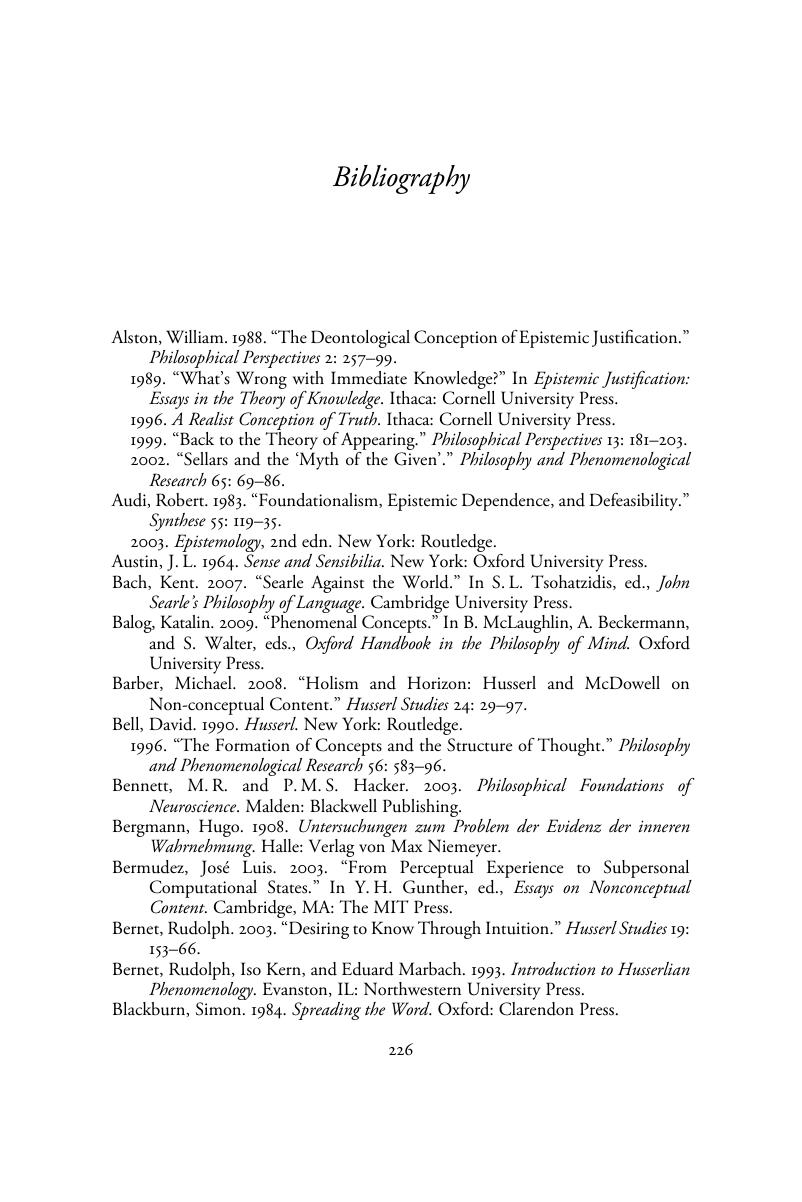Book contents
Bibliography
Published online by Cambridge University Press: 21 April 2011
Summary

- Type
- Chapter
- Information
- Perception and KnowledgeA Phenomenological Account, pp. 226 - 241Publisher: Cambridge University PressPrint publication year: 2011

